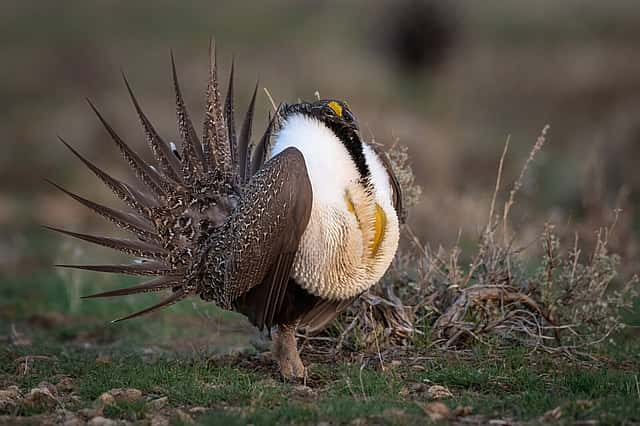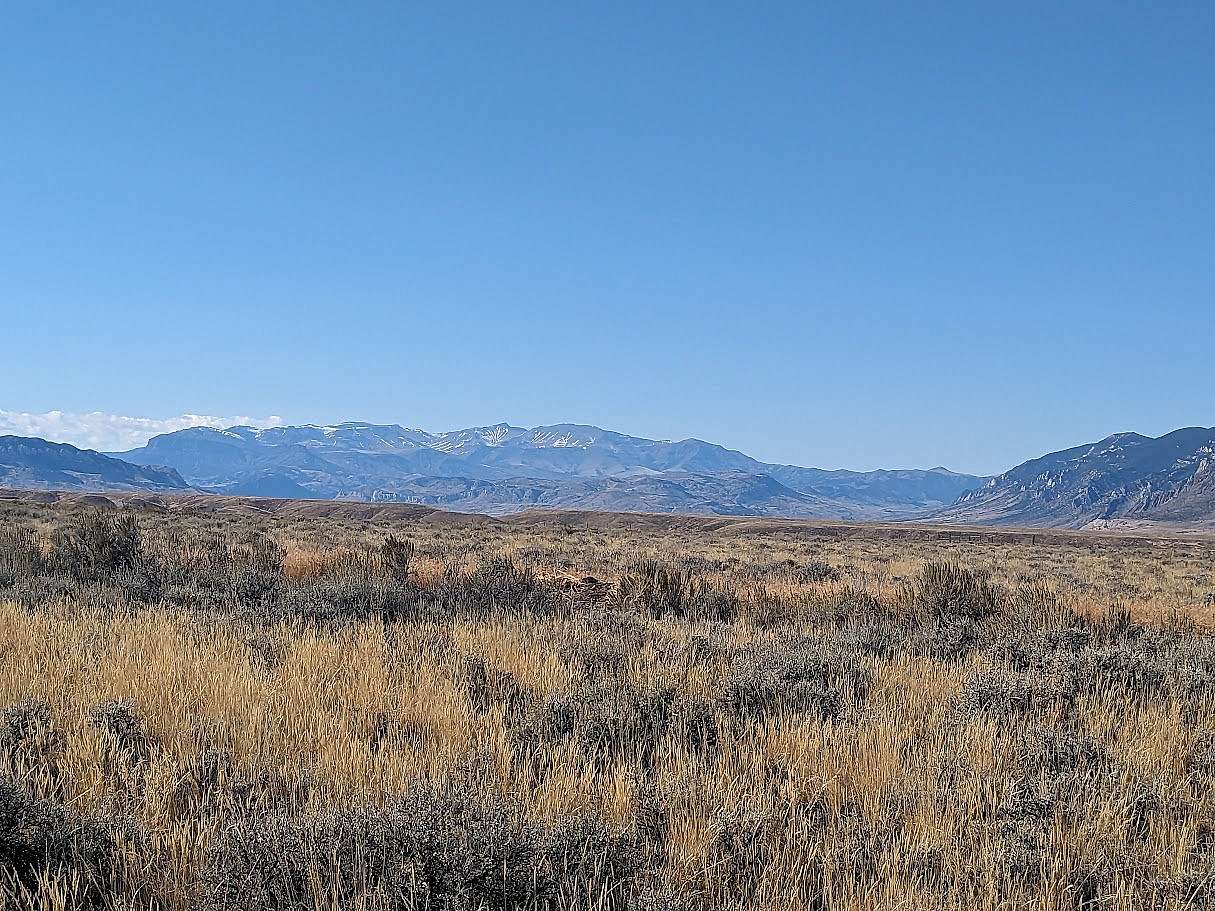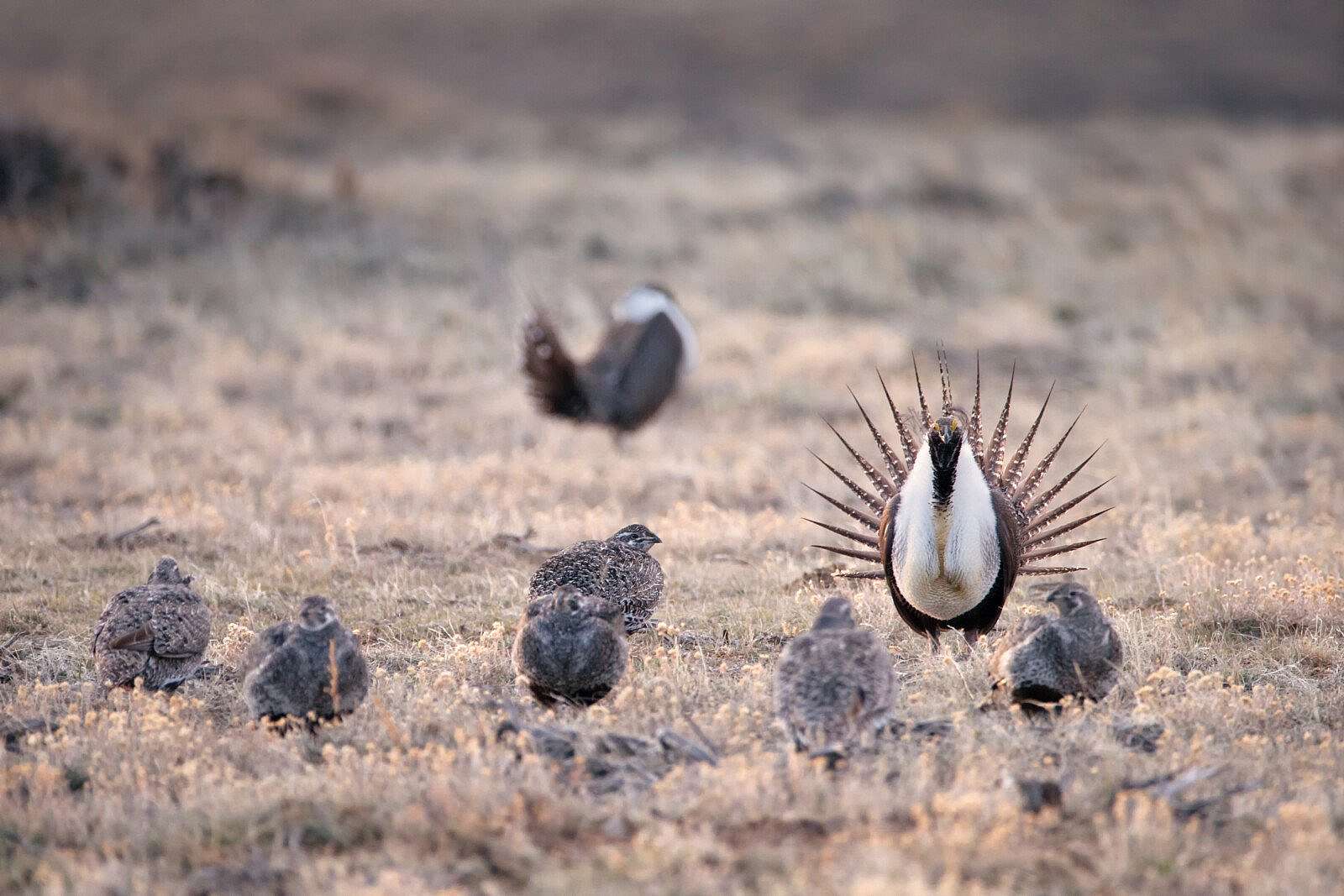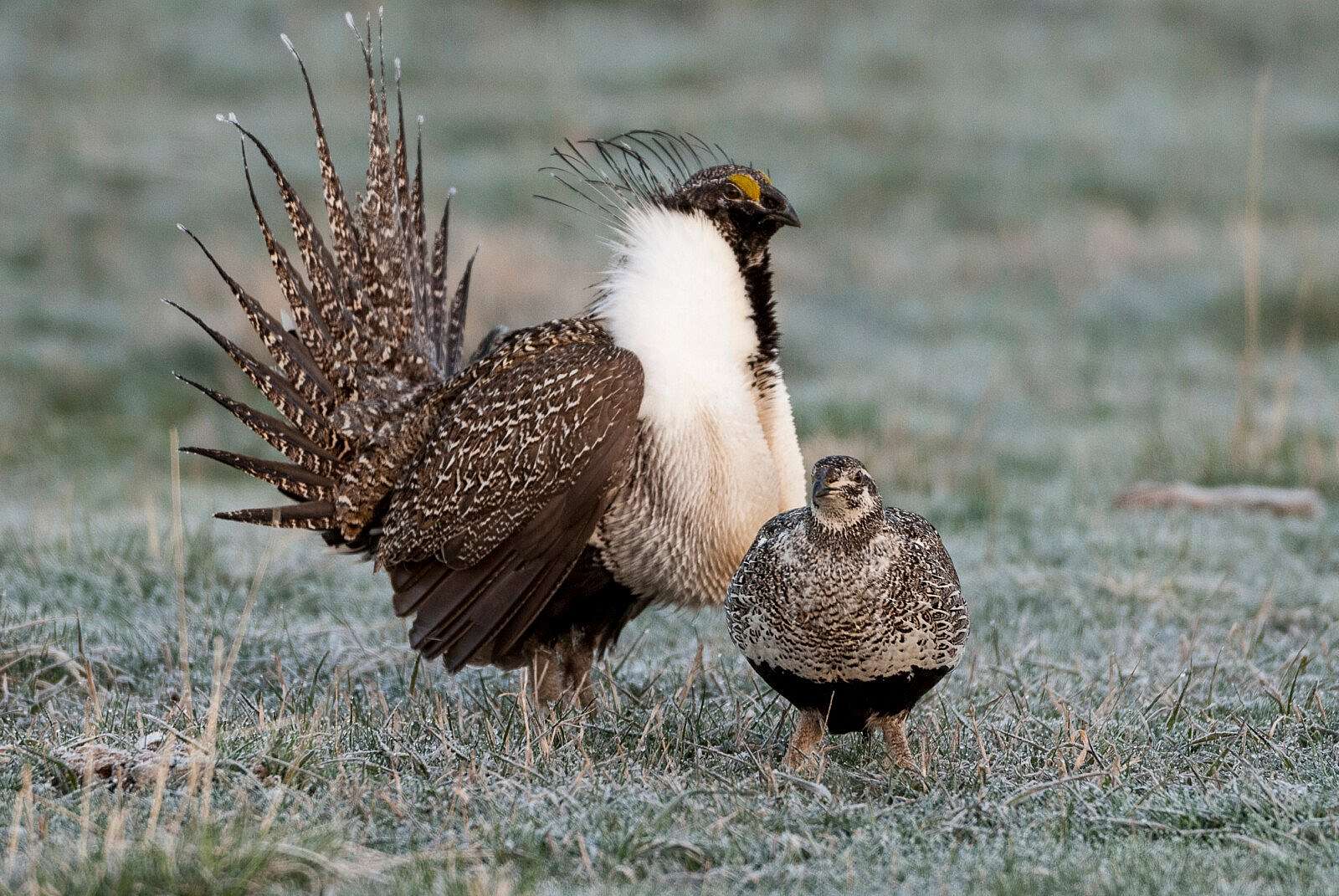
Practicing Safe Leks: A Guide to the Greater Sage-Grouse
The Greater Sage-Grouse (Centrocercus urophasianus) is one of the flashiest introverts in the bird world. For most of the year, these hefty, chicken-like birds keep a low profile, blending into the vast sagebrush sea of the American West. But come spring, the males put on an absolute spectacle, puffing up their chests (literally) and strutting their stuff on traditional breeding grounds called leks. If you’ve never seen a sage-grouse lek in action, imagine a feathery nightclub where the dance moves haven’t changed for thousands of years.

©David/ Adobe Stock #586755285
Basic Biofacts
- Size: Males can reach up to 30 inches in length with a wingspan of about 3 feet, making them North America’s largest grouse. Females are smaller and less conspicuous—because someone has to be the responsible one.
- Lifespan: Typically 3-6 years in the wild, although some exceptionally lucky birds have made it to 10.
- Diet: Mostly sagebrush—seriously, these birds are sagebrush connoisseurs. In winter, they eat almost nothing else. During the warmer months, they mix it up with forbs, insects, and other greens.
- Range: Found in 11 western U.S. states and parts of Canada, wherever sagebrush still reigns supreme.
- Habitat: Sage-grouse are the poster birds for sagebrush steppe ecosystems. No sagebrush, no grouse. Simple as that.
- Reproduction: Females typically lay 6-9 eggs in a shallow nest hidden under sagebrush. Incubation lasts about 25-27 days.
- Offspring Survivability: Once hatched, chicks are highly vulnerable to predators and environmental conditions. Mortality rates are high, with fewer than half surviving to adulthood.
Conservation Concerns
Greater Sage-Grouse populations have been declining for decades, primarily due to habitat loss. Sagebrush ecosystems are disappearing because of expanding development, energy extraction, invasive species (looking at you, cheatgrass), and an increase in wildfires. Since sage-grouse don’t do well in fragmented landscapes, conservation efforts focus on protecting large, unbroken tracts of habitat.
The sagebrush steppe isn’t just home to sage-grouse—it’s an entire ecosystem that supports a wide range of wildlife found nowhere else in the world. Species like the pygmy rabbit, pronghorn, sage thrasher, and mule deer all rely on healthy sagebrush habitat. When sage-grouse populations decline, it’s a warning sign that the entire ecosystem is in trouble. Protecting sage-grouse means protecting these other species as well as maintaining a landscape that supports biodiversity, healthy soils, and water retention in arid environments.

Photo by Melissa Hill
Sagebrush isn’t just important for wildlife—it’s also vital for the land itself. The deep roots of sagebrush plants help hold soil in place, preventing erosion in the often dry and windy West. These roots also allow sagebrush to capture and retain moisture, making it an essential player in maintaining groundwater levels and reducing the impacts of drought. Without healthy sagebrush ecosystems, the landscape becomes more prone to desertification, dust storms, and the spread of invasive grasses that fuel wildfires.
Attempts to list the species under the Endangered Species Act have sparked debates between conservationists, landowners, and industry groups. While the bird itself is not currently listed, various state and federal conservation plans aim to keep it off the list while still ensuring its survival. Sage-grouse conservation can spark some lively discussions in the West, but at least it’s a good excuse to linger over a cup of coffee while folks share their perspectives.
The Art of Lekking
Lekking is the sage-grouse equivalent of a high-stakes talent show, where males gather in open areas to put on elaborate courtship displays. Each male stakes out a small patch of ground and begins an intricate performance that includes inflating and deflating bright yellow air sacs on their chests, fanning out their spiky tail feathers, and producing a series of bizarre popping and swishing sounds. The goal? Impress the discerning females, who watch from the sidelines and ultimately choose which males are worthy of passing on their genes.
Not all males get lucky—most of the action is dominated by just a few top-performing individuals, while the rest go home empty-feathered. It’s a dramatic, high-energy event that plays out every spring and is both mesmerizing and hilarious to watch.

©Agnieszka/ Adobe Stock #985191093
Safe Viewing and Lek Etiquette
If you’re lucky enough to witness a sage-grouse lek in action, there are a few golden rules to follow:
- Keep your distance: Use binoculars or spotting scopes rather than approaching too closely. If the birds start acting nervous, you’re too close.
- Stay quiet: Males are busy trying to impress the ladies, and any human-made noise is just embarrassing for everyone involved.
- No headlights or sudden movements: If you’re watching from a vehicle, turn off your lights before sunrise and avoid slamming doors or making quick movements.
- Stick to established viewing areas: Some leks have designated blinds or recommended vantage points. Use them!
- Leave no trace: Pack out what you pack in and avoid trampling the fragile sagebrush habitat.
Greater Sage-Grouse are more than just funky dancers of the West—they’re a keystone species of the sagebrush ecosystem. Protecting them means protecting hundreds of other species that call this unique landscape home. So, if you find yourself out on the range during lekking season, remember: practice safe leks, be a good guest, and appreciate the weird and wonderful world of sage-grouse courtship from a respectful distance.

©Danita Delimont/ Adobe Stock #420884291
Written By
Melissa Hill
While earning her Bachelor's Degree in Wildlife Management at the University of Wyoming, Melissa began volunteering at Laramie Raptor Refuge and was instantly hooked on birds of prey. Since those early days, she has worked with nearly 70 different raptors at four different raptor education groups in three states. She is a former member of the Education Committee for the International Association of Avian Trainers and Educators (IAATE) and a National Association for Interpretation's Certified Interpretive Guide. When she's not "playing with the birds" she enjoys spending time quilting, crocheting, and exploring the Greater Yellowstone Ecosystem with her non-bird family.
